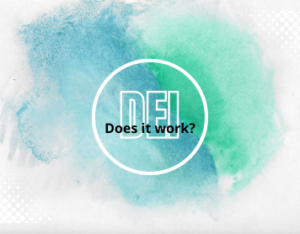In item 6 of Kamala Harris’ A New Way Forward, she asserts that Donald Trump and Republicans want to dismantle Social Security and Medicare. She pledges to protect these programs by raising taxes on millionaires and billionaires to ensure they pay their “fair share.” While this popular Democratic talking point sounds promising, it misleads the public and oversimplifies complex issues, ignoring the real challenges facing Social Security’s solvency.
In this post, we’ll analyze Harris’ claims, debunk her proposals, and explore the financial realities of Social Security that politicians like her often sidestep.
Misrepresenting Conservative Proposals
Kamala Harris frequently frames Republican proposals as attempts to eliminate Social Security and Medicare. This is a gross mischaracterization. In reality, conservative lawmakers have called for reforms to extend the lifespan of these programs, not dismantle them. These reforms often include gradually raising the retirement age or implementing benefit adjustments for higher-income earners. These measures are essential to keeping Social Security viable for future generations, as the current model is unsustainable without changes.
Harris’ narrative ignores the crux of the problem: Social Security’s financial outlook has deteriorated, and reform is the only way to prevent future insolvency.
Social Security’s Financial Challenges: A Harsh Reality
The Social Security trust fund is projected to be depleted by 2034-2035, and once that happens, payroll taxes will only cover about 75-80% of scheduled benefits. This shortfall stems largely from shifting demographics: the Baby Boomer generation, which was the largest contributor to the fund, is now entering retirement, drawing on benefits at an unprecedented rate.
In the mid-20th century, five workers supported each retiree. Today, the ratio is less than three workers per retiree, and this gap is growing. These demographic trends are the root cause of Social Security’s financial strain—something Harris fails to address while pushing her tax-the-rich solution as a cure-all.
Harris’ “Tax the Rich” Solution: A Political Band-Aid
One of Harris’ key proposals is to raise taxes on the wealthy, ensuring millionaires and billionaires contribute their “fair share” to preserve Social Security. While this idea may appeal to many voters, it falls far short of solving the issue.
Experts have found that even substantial tax increases on the rich would only close a small portion of Social Security’s funding gap. Taxing the wealthy to the extent required would also risk broader economic consequences, potentially discouraging investment and stunting economic growth. Harris’ vague calls for higher taxes ignore the real numbers, making her solution more of a political talking point than a viable fix for Social Security’s looming shortfall.
Borrowing From Social Security: An Unaddressed Issue
One of the biggest factors contributing to Social Security’s financial crisis is Congress’ decades-long practice of borrowing from the trust fund to cover other government expenses. Over the years, Congress has siphoned an estimated $2.8 trillion from the Social Security reserves, replacing the funds with U.S. Treasury bonds. These bonds are obligations that must be repaid with interest when the funds are needed for benefits.
While technically this borrowing isn’t illegal, it exacerbates Social Security’s funding crisis. When the bonds are redeemed, the government must raise funds either through increased taxes, more borrowing, or cutting other programs. This creates a fiscal strain that Harris’ platform fails to address.
Raising the Retirement Age: A Reasonable Proposal
Harris claims that Republicans want to raise the retirement age to 71, framing this as an unjust burden on Americans. However, raising the retirement age is a reasonable proposal that reflects longer life expectancies. The last time the retirement age was adjusted was during the Reagan administration in the 1980s, when it was raised from 65 to 67.
Given that Americans are living longer, healthier lives, gradually increasing the retirement age is a sensible way to keep Social Security solvent for future generations. This proposal isn’t about depriving retirees of their benefits but about ensuring that the program remains sustainable. Harris’ opposition to this measure distorts the broader conversation around Social Security reform.
Republican Proposals: Reform, Not Dismantling
Contrary to Harris’ portrayal, Republican proposals for Social Security focus on sustainability, not elimination. These reforms include:
- Means-testing benefits for wealthier Americans to prevent those with significant resources from drawing benefits they don’t need.
- Allowing younger workers to invest part of their payroll taxes into personal accounts, providing them with more control over their retirement savings.
- Gradually increasing the retirement age to reflect changes in life expectancy, ensuring the program remains solvent.
These ideas are designed to make Social Security work for future generations, a concept Harris disregards in favor of short-term political gain.
Congress’ Unpaid Debt: The Legacy of Borrowing
The practice of borrowing from the Social Security trust fund has left a financial burden that remains unpaid. The estimated $2.8 trillion borrowed from the trust fund over the decades must eventually be repaid, but doing so will strain the federal budget. When these funds need to be redeemed, the government will either have to raise taxes, cut spending, or borrow more, adding to the national debt.
Harris’ platform ignores this deeper issue, offering no solutions to the longstanding practice of borrowing from Social Security. Her focus on taxing the wealthy doesn’t account for the structural problems Congress has created through irresponsible fiscal policies.
Conclusion: A Reality Check on Harris’ Claims
Kamala Harris’ rhetoric on Social Security presents a skewed picture of the program’s challenges and the solutions needed to preserve it. Her plan to raise taxes on the wealthy is an incomplete and unsustainable solution. Social Security faces a demographic crisis that requires meaningful reform—reforms that Harris refuses to engage with.
By contrast, conservative proposals offer practical ways to keep Social Security viable, including adjusting the retirement age and means-testing benefits. These are not attacks on the program, but necessary changes to preserve it for future generations.
Ultimately, Harris’ focus on fear-mongering and short-term fixes does a disservice to the American public. It’s time to have a real conversation about Social Security reform—one that Harris has failed to initiate.
References:
- “Social Security: What You Need to Know,” Social Security Administration, ssa.gov.
- “The Social Security Trust Fund and Borrowing,” The Heritage Foundation, www.heritage.org
- “Social Security Reform: GOP vs. Democrats,” The Balance, thebalance.com
- “Kamala Harris’ Plan on Social Security,” Harris Campaign Website, kamalaharris.org





